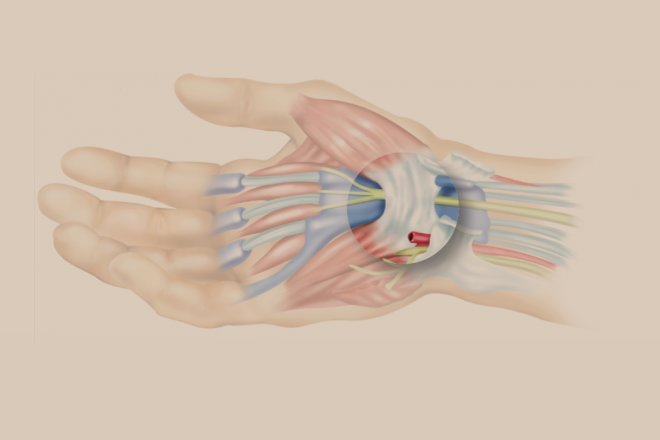Healthcare is a social determinant of health and as such a country’s health depends on the kind of healthcare that is available. Thus, healthcare is one of the sectors that empowered to possess a great influence over the healthcare economy expectancy and happiness of a population. Let’s explore the list of countries with the best healthcare in the world.
In this article you will be able to know which countries provide best healthcare; where luxury, or rather necessity of medical techniques, coverage and talented professionals intersect to create the most developed healthcare systems. Indeed, these are the outstanding countries leading with such confidence that the health of the public is best addressed comprehensively, affordably, and effectively.
Top 10 Best Healthcare in the World
Let’s look at the list of countries with the best healthcare in the world and find out why they are considered the best.
1. Switzerland: A Benchmark for Healthcare Excellence
Switzerland regarded as one of the country with the best healthcare system which outstanding throughout the world being at the top with nations. This has been evidenced by the country’s ability to deliver efficient quality services, and its emphasis on early prevention.
- Features of Swiss Healthcare: Switzerland has both private and public health insurance systems where for the citizen there are many options they can choose from. Individuals requiring comprehensive insurance plans can find them from private insurance companies whereas basic insurance premiums are paid by the government for the less fortunate. Furthermore, the system pays special attention to the developments of the healthcare sector and often purchases modern facilities and equipment.
- Emphasis on Preventive Care: This is however compensated by the fact that the Swiss healthcare system focuses quite greatly in the preventive area of healthcare. This country always stresses on prevention of physical ailments and disease meaning that people should go for checkups and tests frequently. Pursuing a policy of primary prevention, the Swiss healthcare system would like to prevent as many chronic illness cases as possible and thereby decrease the overall healthcare costs in the country.
- Challenges: there are some concerns for Switzerland regarding financial sustainability of the healthcare system, and cost contains remain an issue. This includes issues to do with costs of drugs and health consumer services, and the general efficient consumption of resources.
2. Germany: Comprehensive and Accessible
The healthcare system in Germany is one of the best in the world also the population is under the health of health insurance. It is for these reasons that this country boasts of having very high-quality health facilities, the use of hi-tech technology, multiple specialties of medical services as well as a very healthy balance between the public and private sectors.
- Universal Coverage: The major basis of Germany healthcare model lies in covering universal healthcare for everyone. Every citizen of Germany gets assured of their cheap and high-quality healthcare services. The funding of the system is the mandatory employers and employees’ contribution besides the government top up hence it avoids skewing the costs within certain group.
- Technological Advancements: One is a commitment to the healthcare sector in tech, and Germany’s high-ranking shows. It funds research and development to guarantee that its healthcare facilities and equipment are sophisticated as they can be. These advancements in technology do create several advantages since patients get the right diagnosis and appropriate treatments to enable them to have the best standards of health.
- Public and Private Options: The German healthcare system combines many private features besides strong public features and puts the final nail and final choice of healthcare providers into the hands of German citizens. Many people are covered through their workplace or government insurance, but they must purchase additional insurance and it offers fewer services. This way there is user choice and decision, to ensure that the patient gets the right care at the right time.
3. Sweden: The Gold Standard of Public Healthcare
The Swedes regard their free public healthcare service as the best in the world and the services are available to all the residents at a very cheap cost, which is usually provided either by the state or by the employment exchange. One of the sharpest healthcare focuses on the patient and never-ending investments in R&D have made a country consistently deliver great results.
- Key Features: Healthcare in Sweden is more equitable, efficient and offers good quality health facilities. The government offers free specialized coverage with patients commonly charged minimal or no fees for consultations, medicine, and other services. This is in a bid to ensure that every citizen of the country can access the type of care that they need without having to factor in his status in society.
- Focus on Research and Development: In Sweden, more research is being devoted to healthcare than in any other country as the following figures show. The country channels lots of resources to medical research to come up with research on the various health precursors that continue to be discovered and treatment procedures that are being invented. The focus is on innovation which means that the patient has a chance to access current healthcare systems and methods with the highest chance of cure available.
- Patient-Centered Care: In the center of Sweden’s healthcare system, there is a focus on the patient’s needs. This system ensures that healthcare providers take one’s individual nature into duly consideration when together with the patient seeking the best solution. It would also complement other traditional measures of addressing the quality of health services in the respect that patients receive personalized care at every stage of their illness leading to better quality of services and general satisfaction with the healthcare system.
4. Norway: A Model of Universal Healthcare
Another success story that has accomplished its goal to provide universal quality healthcare for the Norwegians and the Norwegian healthcare system. It can be suggested that emphasis on primary care, high government investment coupled with high healthcare effectiveness are among the major reasons for the success of the system.
- Primary Care Focus: The general services of healthcare in Norway are based upon primary care networks and general practitioners as gatekeeper for most clients. These primary care physicians provide a suitable approach to the patient in the prevention of diseases, diagnosis, and management of diseases common to patients, and the correct guidance of the patients to the specialist. This way, the primary care intends to provide the necessary and adequate care for the patients from Norway.
- Government Funding: The principal source of the Norwegian healthcare funding is a government that aims at providing adequate and equal investment in healthcare services to support Norwegians especially those with no finances to afford care services. The government’s enhancements of the funding of healthcare can also be seen from its regular investment in medical facilities and equipment and human resources for health, research, and development.
- Healthcare Outcomes: A commitment to the high-quality healthcare services is evident in a consistently high performance in healthcare related outcomes in Norway. It’s scoring well in many aspects of health such as life expectancy, infant mortality rate as well as cancer survival rates. These good results sufficiently prove the efficiency of the healthcare of Norway and the concern of the state for its population.
5. Singapore: Efficiency and Innovation
Today Singapore boasts of having one of the most efficient, innovative, and preventive healthcare delivery systems in the world. These aspects have lent the country on option of a premier healthcare delivery system that is globally competitive and ranks among the best health systems across the globe.
- Key Aspects: The healthcare delivery system in Singapore will comprise of three major components; The National Health Insurance, the Public Hospitals, and the Private Healthcare Industry secrets. The healthcare system has the government funded MediSave program for the people to save money for their medical bills then the public hospitals to treat every citizen at an affordable and very high quality. Further, there are private health-care facilities that perform several services and have many luxurious accommodations for people who have enough money.
- World-Class Facilities: Singapore houses many of the best healthcare institutions such as hospitals, clinics, and healthcare specialty centers. These medical institutions comprise some of the best technologies in the world and efficient personnel to give the best care to clients. It also has its well-established medical schools, colleges, and research centers that explain why it has one of the best medical research facilities.
- Preventive Healthcare: The government encourages people to lead healthy lives and seek early medical check-ups should there be any sign of the signs of a disease. The use of health promotion and disease prevention has been among the goals of Singapore Health System to fight chronic diseases among the population.
Also Read – Top 10 Healthcare Companies in India
6. Japan: Tradition Meets Modernity
It is imperative to stick and popular for its advanced technologies on medical field, fine medical services, and creative perception on patients. Preventive measures are of great importance and Japan has among the highest life expectancies on the globe.
- Universal Coverage: Under Japanese National Health Insurance or under KEIDANREN (an Employee Health Insurance Association, owned by the employer), there is automatic enrollment among Japanese citizens. Foreign residents are also expected to sign up to any of these insurance plans. This guarantees that everyone is given proper attention of health without being charged.
- Preventive Measures: The Japanese government also looks mostly towards prevention and sport and healthy diet and coping with stress can be seen in “Health Japan 21”. These initiatives are to decrease the rates of chronic diseases and enhance the quality of people’s lives.
- Cultural Integration: Today’s Japan’s healthcare system combines cultural beliefs and practices into its delivery of care. This includes special consideration for Asian patients which include portraying courteous and sensitive care to the older people, involving the relatives in the process of decision making, and recognizing traditional method of healing from Japan with modern methods.
7. France: Top Notch Healthcare Facilities
Healthcare in France always featured first rate hospitals and medical personnel. The French healthcare delivery is a regulated part of the universal health insurance organization that guarantees each person’s right to quality healthcare without having to pay for it according to the status.
- Health Insurance for All: The reason of the universality of the French health insurance is that the latter is funded via the social security in the French government. This insurance aims to provide for all the social populace in the country as well as the foreigners living in the country, everyone is availed a basic form of health cover.
- High Standards of Care: France boasts as having very enviable health standards and with the French health-centered facilities, hospitals and units boast of advanced equipment coupled with highly skilled human resource. In addition to that it emphasizes research due to its enhancement of the medical field and new treatment procedures.
- Lifestyle and Healthcare: The French government has acknowledged the relation between lifestyle and health and has launched different campaigns regarding health. Examples of examples are smoking control, the moderation of the use of alcohol, the promotion of moderate physical activity and a healthy diet.
8. Australia: Public and Private Heath Management
Today the Australian healthcare system is based on both public and private practices and has significant focus on prevention of diseases and primary healthcare. The same Australian government has successfully envisioned and implemented a healthcare system for their people.
- Universal Medicare: Medicare is an Australian government system that offers free medical care in the society. Examples of such services are paid doctor’s visits, some treatments in the hospital, and some prescribed drugs.
- Focus on Mental Health: The Australian healthcare sector gives critical emphasis on the primary prevention and uptake of service; mental health is one of the important component. Mental health is aligned with medical treatment, part and parcel of bodily health, and the health of other aspects of the human being.
- Telehealth Services: Australia has increasingly adopted technological advancement in healthcare and particularly in the remote areas. As was mentioned before, telehealth services refer to the use of phone or video to communicate with healthcare providers thus eliminating the need to travel to view appointments.
9. Canada: Accessible and Equitable Care
Medicare is a publicly funded system in Canada for which all the inhabitants have equal access to healthcare. It is one of the modes that help in an essence of affordable and equal healthcare service delivery to the populace thus extend equal health chance to all the citizens.
- Medicare System: The Canadian government offers free medical services that are essential according to the society like doctor visits, care in a hospital, different types of prescribed drugs, etc. in what is known as this plan which has been celebrated worldwide (Bodenheimer and Pham 2007). Not every service is fully costless although Canadians cannot be overcharged for out-of-pocket expenses anyhow.
- Focus on Primary Care: Prime care is one of the significant dream of Canadian medical care benefit as the populace is supported by a chain of gens and specialists. This stabilizes the crowding in these emergency facilities and ensures that patients then receive total attention.
- Multicultural Sensitivity: Canada being a multicultural nation, Healthcare sector of the country pays respect to the cultural differences of the diverse people. Among those are language and culturally appropriate health education materials and measures to employ culturally diverse staff.
10. The Netherlands: A Pioneer in Healthcare Policy
It is quite renown for having one of the most progressive health policies and most efficient systems in the world in Netherlands. It is a model for many countries, with a high-quality and safe model of healthcare, patient centered, promoting patient involvement, improvement, and integration.
- Compulsory Insurance: The government of the Netherlands mandatory health insurance for all the occupants; the insurance can be from the government or from other private insurance firms. It makes certain that every citizen affords quality healthcare services through compulsory insurance.
- Patient Autonomy: Dutch healthcare style of delivering care is anchored on the patient autonomy and patient involvement in the decisions to be made. Consumers are empowered to demand, seek, understand, and participate in decisions about their health.
- Integrated Care: The Netherlands has fully embraced Integrated care, which is the linkage of services from different sectors to create care delivery continuity, for the patient. The goal of this approach is to provide better experience, raise the quality of patients’ treatment, as well as decrease costs.
Conclusion: Leading the Way in Global Healthcare
This article considers the top countries with the best healthcare in the world in which the government provides outstanding healthcare services to the populace. Every country has its own characteristics, however, at the same time they have similar features – coverage, primary care, prevention, and concern for innovation and quality.
By emulating the successes of these countries, whilst also recognizing the problems which have occurred, it is possible for the rest of the world to keep on building equitable, efficient, and effective systems of healthcare. This will eventually make the world a healthier place and a better future for the world.






